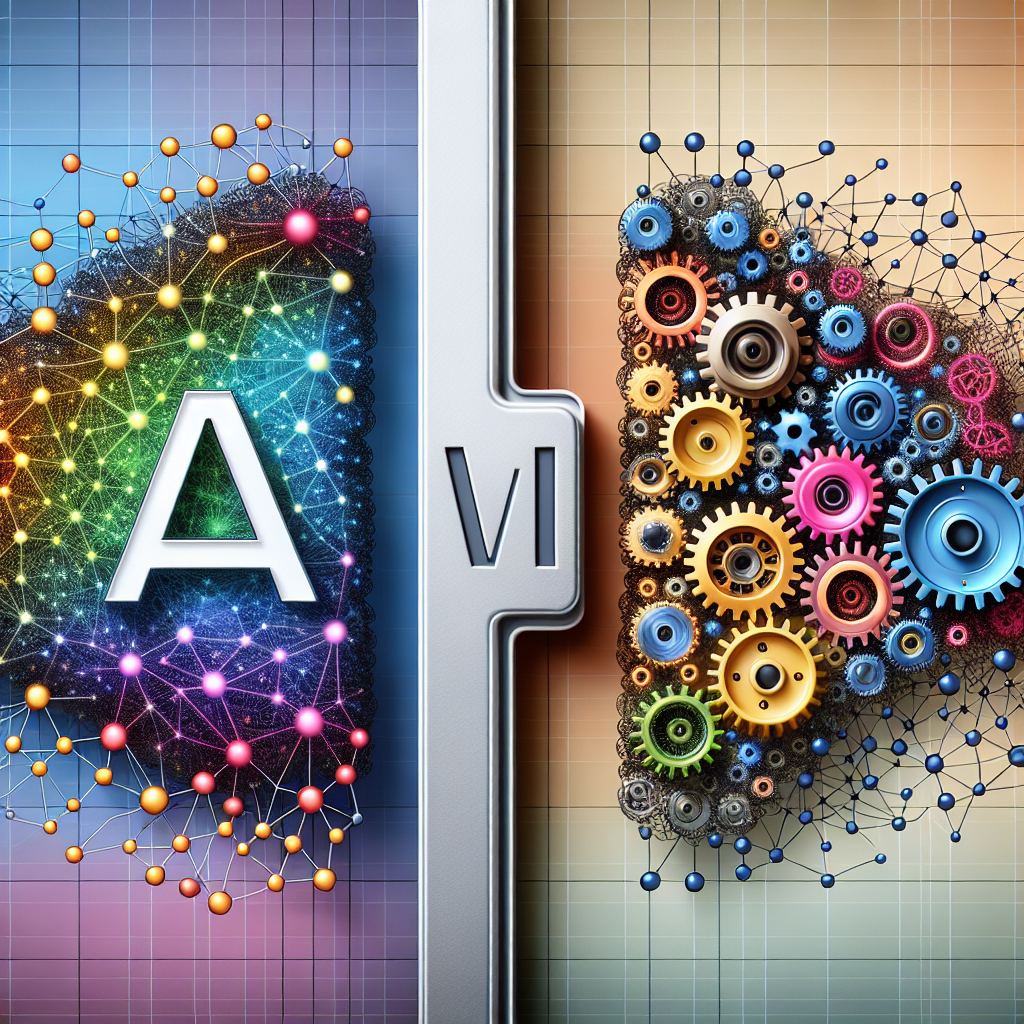Artificial Intelligence (AI) and Machine Learning (ML) are two commonly used terms in the field of technology, often used interchangeably. However, they are not the same thing. In fact, AI and ML are two distinct concepts that serve different purposes and utilize different programming techniques. Understanding the differences between AI and ML is crucial for anyone working in the tech industry or interested in learning more about these cutting-edge technologies.
AI is a broad field of computer science that aims to create machines that can perform tasks that typically require human intelligence. This includes tasks such as speech recognition, problem-solving, decision-making, and learning. AI systems are designed to mimic human cognitive functions, such as reasoning, problem-solving, and learning, in order to perform a wide range of tasks.
On the other hand, ML is a subset of AI that focuses on developing algorithms that can learn from data and make predictions or decisions based on that data. ML algorithms use statistical techniques to identify patterns in data and make predictions or decisions without being explicitly programmed to do so. This is in contrast to traditional programming, where a programmer writes explicit instructions for the computer to follow.
One way to think about the relationship between AI and ML is that AI is the overarching field that encompasses a wide range of technologies and techniques, while ML is a specific approach within AI that focuses on learning from data. In other words, ML is a tool that can be used to achieve AI goals, but it is not the only tool available.
Differences in Programming
One of the key differences between AI and ML lies in the programming techniques used to develop these technologies. AI systems typically involve a combination of rules-based programming and machine learning techniques, while ML systems rely heavily on algorithms that can learn from data.
In AI systems, rules-based programming is used to define the logic and decision-making processes that the system will follow. This involves writing explicit instructions for the computer to follow in order to perform a specific task. For example, a speech recognition system might be programmed to recognize certain words or phrases based on a set of predefined rules.
In contrast, ML algorithms do not rely on explicit programming instructions. Instead, they learn from data by identifying patterns and relationships within the data. This is done through a process called training, where the algorithm is fed a large amount of data and adjusts its parameters to minimize errors and make accurate predictions. Once the algorithm has been trained on a sufficient amount of data, it can then be used to make predictions on new data.
Another key difference between AI and ML lies in the level of human intervention required. AI systems often require a significant amount of human input in order to define the rules and logic that the system will follow. This can be time-consuming and labor-intensive, as programmers must carefully design and implement the rules that govern the system’s behavior.
In contrast, ML algorithms can learn from data without the need for explicit programming instructions. This makes ML systems more adaptable and flexible, as they can adjust their parameters based on the data they are given. However, this also means that ML algorithms require a large amount of high-quality data in order to learn effectively.
FAQs
Q: Can AI systems learn from data like ML algorithms?
A: While AI systems can incorporate machine learning techniques to learn from data, they also rely on rules-based programming to define their behavior. This means that AI systems may not be as adaptable or flexible as ML algorithms when it comes to learning from new data.
Q: What are some examples of AI systems?
A: Examples of AI systems include virtual assistants like Siri and Alexa, self-driving cars, and recommendation systems used by online retailers and streaming services. These systems use a combination of rules-based programming and machine learning techniques to perform tasks that require human intelligence.
Q: How are AI and ML being used in the real world?
A: AI and ML technologies are being used in a wide range of industries, including healthcare, finance, retail, and transportation. For example, AI is being used to develop personalized medicine treatments, detect fraud in financial transactions, and optimize supply chain management. ML algorithms are being used to analyze customer data, predict consumer behavior, and improve the efficiency of manufacturing processes.
Q: What are the ethical implications of AI and ML?
A: As AI and ML technologies become more advanced and widespread, there are growing concerns about the ethical implications of these technologies. Issues such as bias in algorithms, privacy concerns, and the impact on jobs and society are all important considerations when developing and deploying AI and ML systems.
In conclusion, AI and ML are two distinct concepts that serve different purposes and utilize different programming techniques. While AI is a broad field that aims to create machines that can perform tasks requiring human intelligence, ML is a subset of AI that focuses on developing algorithms that can learn from data and make predictions or decisions based on that data. Understanding the differences between AI and ML is essential for anyone working in the tech industry or interested in learning more about these cutting-edge technologies.

